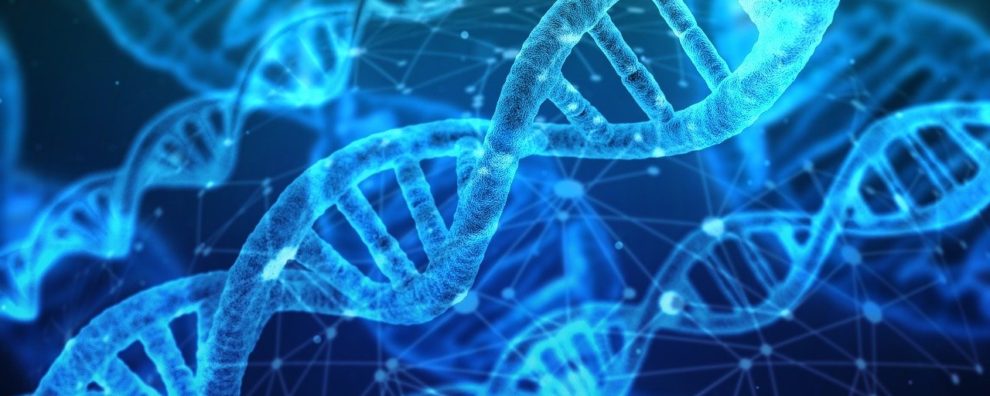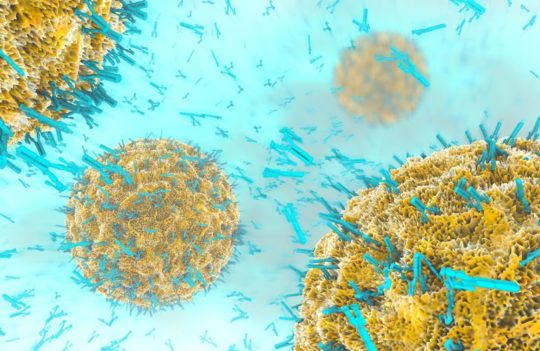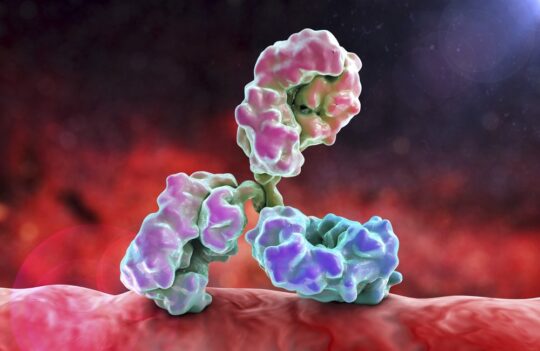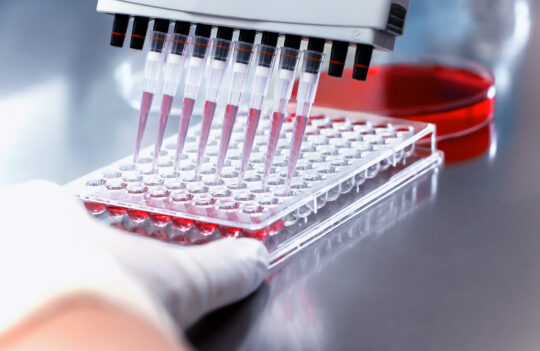 Antibody production
Antibody production
Is genetic immunization a one-size-fits-all solution to accelerate polyclonal antibody generation?
Polyclonal antibodies are valuable tools for research as secondary reagents or therapy as antivenom drugs. However, their production has largely remained unchanged in the past decades relying on time-consuming, non-scalable, and animal-dependent methods. Conventional polyclonal antibody generation methods involve the design and production of an antigen, hyper immunization of animal hosts, continuous monitoring of antigen-binding antibody titers, and plasma harvesting for subsequent purification. Did genetic immunization truly revolutionize these protocols?
Limitations of conventional polyclonal antibody generation approaches
Conventional polyclonal antibody generation techniques are time-consuming, costly, and difficult to scale-up and standardize. Although polyclonal antibodies are often appreciated for their increased sensitivity, the typically high batch-to-batch variability and reduced abundance of antigen-specific high-affinity molecules often hinder their usage for therapy and diagnostics.
The success and yield of these approaches largely depend on the stability and immunogenicity of the antigen, as well as on the immunization strategy, and host size. In recent years, polyclonal antibody generation, especially for therapeutic application (i.e. antivenoms) have been considerably improving due to the use of better purification methods (i.e. antigen affinity purification) and the implementation of antibody fragmentation methods (i.e. antibody fragmentation to remove xenogeneic Fc domains).
But these little improvements have not shortened the typical timeframes for polyclonal antibody generation neither have they significantly reduced the production costs.
Improving costs and timeframes in polyclonal antibody generation projects
Some experts argue that the greatest development in polyclonal production was brought by the onset of genetic immunization. By using plasmid DNA to transfect the host’s cells and stimulate them to produce antigens in vivo, it is possible to avoid the costly and time-consuming antigen production that precedes all typical polyclonal antibody generation projects.
Besides saving time and production costs, genetic immunization can be successfully used to overcome the hurdles of raising polyclonal antibodies against difficult-to-express membrane proteins, which cannot maintain their native conformation when expressed in a soluble form. Some proteins may also lose their antigenicity during the isolation procedure, causing them to work as poor antigens for polyclonal antibody generation.
But is antigen conformation always important? No, in fact, the ability to recognize the native conformation of an antigen is important for in vivo applications such as therapy, some diagnostics approaches, and some research projects. However, protocols such as Western Blot use denatured proteins. In this case, the native conformation is not important, and antibodies can be raised using linear peptides for immunization.
How does genetic immunization work?
Genetic immunization has been extensively studied in the context of human vaccine development. DNA is quicker and cheaper to produce than proteins and some peptides. Moreover, unlike protein or peptides that often require the use of chemical adjuvants, the use of bacterially methylated DNA or the inclusion of toxin-encoding genes can optimize the antigenicity and immunogenicity of these vaccines whilst foregoing the need to use chemical adjuvants. Interestingly, these DNA vectors can also be designed to encode typical T-cell epitopes, ensuring that the immunization elicits a strong cell-mediated and humoral immune response.
Despite the increasing number of studies, a single genetic vaccine has yet to be licensed for human use. However, this approach has been recurrently used for raising both monoclonal and polyclonal antibodies across many different hosts.
Genetic vaccines can be delivered in many ways including:
- Direct injection of naked plasmid DNA into muscle, lymph nodes, or the dermis
- Electroporation
- Ballistic (gene gun) delivery
- Viral vector delivery
Of these, naked plasmid DNA delivery is the most attractive solution. This steams from the fact that plasmid vectors are very easily synthesized (unlike viral vectors) and direct injection does not require any specialized equipment (unlike gene gun and electroporation methods).
However, the disadvantage of direct delivery is its low transfection efficiency, especially in larger animals which are the preferred hosts for polyclonal antibody generation. For this reason, most polyclonal antibody generation projects rely on gene gun delivery to increase the yield and abundance of antigen-specific high-affinity antibodies within serum preparations.
Genes encoding for specific antigens can also come from three different sources: DNA, cDNA, and gene synthesis. Although amplifying target genes directly from the genomic DNA or reverse transcribing the cDNA from the RNA would be the simpler options, codon usage bias largely determines the in vivo expression efficiency of a protein. Thus, to increase the yield and quality of polyclonal preparations, gene synthesis coupled with codon optimization should be the preferred method for DNA vector production.
A comparison of different immunization strategies for polyclonal antibody generation
It is well established that genetic immunization can save time and reduce the costs of polyclonal antibody generation. However, genetic immunization is not a one-size-fits-all solution. The reason for this is that genetic immunization is restricted to protein antigens. Moreover, the use of DNA for immunization instead of proteins or peptides can cause the organism to raise antibodies against the DNA itself reducing the specificity of the humoral response.
Bacterial and parasite proteins may also be abnormally processed in the host’s organism, severely decreasing the binding affinity of the antibodies in polyclonal preparations. Moreover, even if the protein does not need to be used for animal immunization, it is still essential to use a recombinantly expressed version of the protein antigen for affinity purification of polyclonal antibody-enriched serum.
Studies show that for soluble proteins, the use of recombinant proteins for immunization consistently outperforms peptide and genetic immunization in terms of yield and antigen-binding affinity. However, for big and membrane proteins, immunization can only be achieved when targeting specific fragments. In this case, DNA vectors resulted in polyclonal antibodies with better characteristics than the ones obtained using peptides. This superiority can be explained by the fact that synthesized peptides cannot mimic the native conformation of proteins, while in vivo produced proteins (delivered by DNA vectors) will likely mimic it resulting in a higher affinity.
Concluding remarks
Genetic immunization does offer some improvements to conventional polyclonal antibody generation approaches. By using DNA, it is possible to shorten the time and reduce the costs of polyclonal production. However, not all antigens perform well when delivered to cells via DNA vectors. In fact, for some cases, including soluble, easy-to-express, bacterial, or parasite-derived antigens, it is preferable to opt for protein or peptide immunization.
- Bates, M. K. et al. Genetic Immunization for Antibody Generation in Research Animals by Intravenous Delivery of Plasmid DNA. Biotechniques. 2006; 40(2):199-208. doi: 10.2144/000112088
- Brown, M. C. et al. Impact of Immunization Technology and Assay Application on Antibody Performance–A Systematic Comparative Evaluation. PLoS One. 2011; 6(12):e28718. doi: 10.1371/journal.pone.0028718
- Chambers, R. S. and Johnston, S. A. High-level Generation of Polyclonal Antibodies by Genetic Immunization. Nat Biotechnol. 2003; 21(9):1088-1092. doi: 10.1038/nbt858
- Hansen, D. T. et al. Polyclonal Antibody Production for Membrane Proteins via Genetic Immunization. Sci Rep. 2016; 6:21925. doi: 10.1038/srep21925




